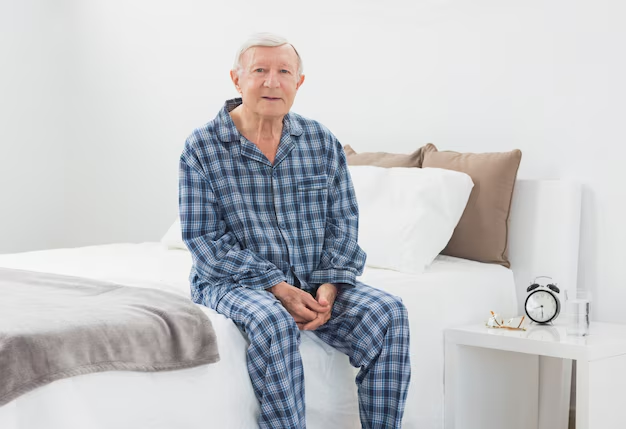Managing Incontinence: Practical Strategies and Solutions for Daily Life
Millions of people around the world experience incontinence, a condition that can impact both physical comfort and emotional well-being. Despite its prevalence, many are hesitant to discuss it, even with healthcare providers. Let’s dive into effective methods and strategies to manage incontinence, foster confidence, and improve everyday life.
Understanding Incontinence
Incontinence refers to the involuntary leakage of urine (urinary incontinence) or stool (fecal incontinence). It can affect individuals of all ages, though it's more common in certain populations, such as the elderly and postpartum women. Knowing the types and causes can help in tailoring effective management strategies.
Types of Incontinence
Stress Incontinence: This occurs when physical movements or activities—like coughing, sneezing, or exercising—put pressure on the bladder.
Urge Incontinence: Characterized by a sudden, intense urge to urinate followed by an involuntary loss of urine.
Overflow Incontinence: Typically results from an inability to empty the bladder fully, leading to leakage.
Functional Incontinence: Occurs when a person is physically unable to reach the bathroom in time due to mobility issues.
Mixed Incontinence: A combination of two or more types, commonly both stress and urge incontinence.
Common Causes
Understanding the causes can assist in addressing the condition more effectively:
- Age-related Factors: Elderly individuals often experience weakened bladder muscles.
- Medical Conditions: Diabetes, neurological disorders, and prostate issues can contribute.
- Lifestyle Habits: Consumption of diuretics like caffeine or alcohol might exacerbate symptoms.
- Hormonal Changes: Women, particularly during menopause, might experience hormonal shifts impacting bladder control.
Lifestyle Modifications and Management Techniques
Implementing certain lifestyle changes can greatly aid incontinence management and enhance daily comfort.
Dietary Adjustments
Being mindful of what you consume is crucial:
- Hydration Balance: Drink enough fluids to stay hydrated but don't overdo it.
- Bladder Irritants: Reduce intake of caffeine, alcohol, and spicy foods which can exacerbate symptoms.
Pelvic Floor Exercises
Also known as Kegel exercises, these help strengthen the pelvic muscles:
- Consistency is Key: Practice regularly to improve muscle tone and control.
- Guidance: Consider professional guidance for correct technique and maximum benefit.
Maintain a Healthy Weight
Excess body weight can increase pressure on the bladder. Maintaining a healthy weight can alleviate symptoms significantly.
Bladder Training
This technique aims to increase the time between restroom visits and can enhance bladder control:
- Set a schedule for urination.
- Gradually increase intervals between toilet breaks.
Practical Tools and Resources
For those living with incontinence, having the right resources is essential for managing the condition with dignity and comfort.
Absorbent Products
These products come in various forms and provide discreet, effective coverage:
- Pads and Liners: For light to moderate incontinence.
- Adult Diapers: Useful for more severe cases.
- Protective Underwear: Offers comfort while ensuring leakage protection.
Skin Care
It's vital to maintain skin health to prevent irritation:
- Hygiene: Regular cleansing and drying of the affected area.
- Barrier Creams: These products can protect the skin from moisture-related damage.
Emotional Well-being and Support Networks
Living with incontinence can be emotionally challenging. Building a support system can provide immense relief.
Open Communication
Talking about incontinence, especially with close friends and family, can alleviate some emotional burdens:
- Awareness: Explaining the condition can build understanding and empathy.
- Support: Family members can offer help in managing daily routines.
Support Groups
Connecting with others facing similar challenges can be empowering:
- Online Forums: Many communities offer advice and share personal experiences.
- In-person Groups: Local support groups may offer additional resources and companionship.
Innovative Treatments and Future Directions
Though this guide focuses on non-medical advice, it’s useful to be aware of potential treatments and innovations in the field.
Non-surgical Treatments
Consulting a healthcare professional can broaden management choices:
- Physical Therapy: Targeted exercises can offer significant improvements.
- Medication: Certain prescriptions can assist in managing symptoms.
Technological Advances
Recent innovations include devices and apps that offer support in managing bladder habits.
Final Insight
Recognizing incontinence as a manageable condition is the first step towards reclaiming control and improving quality of life. By adopting a blend of lifestyle changes, practical tools, and emotional support strategies, those affected can navigate daily challenges more confidently. Building awareness and acceptance around incontinence also contributes to a more understanding and inclusive society.
Key Takeaways:
- 💪 Regular Pelvic Exercises: Consistency with Kegel exercises can enhance control.
- 🥤 Mindful Consumption: Controlling intake of bladder irritants aids in symptom management.
- 🛡️ Utilizing Absorbent Products: These offer discreet protection and comfort.
- 🫂 Engaging Support Systems: Open conversations and support networks are invaluable.
- 📈 Exploring Innovations: Stay informed about new treatments and technological aids.
Adopting these strategies will not only help manage incontinence but also improve overall well-being and confidence in daily life.

Related Articles
- Are Incontinence Supplies Tax Deductible
- Can a Bladder Infection Cause Urinary Incontinence
- Can a Kidney Stone Cause Incontinence
- Can a Urinary Tract Infection Cause Incontinence
- Can a Uti Cause Incontinence
- Can Constipation Cause Incontinence
- Can Dairy Cause Incontinence
- Can Hemorrhoids Cause Bowel Incontinence
- Can Hemorrhoids Cause Incontinence
- Can Incontinence Be Cured